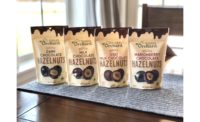Finding the Upside to Anti-candy Rhetoric
Mary Ellen Kuhn
For a while now I’ve been a fan of a Newsweek column called
“My Turn,” the magazine’s vehicle for allowing ordinary
folks to have their say—often rather eloquently—about matters
of personal importance. One evening this spring I turned to that section of
the magazine and saw a headline that gave me pause. “Giving Kids
Candy Is Anything But Sweet,” it read, followed by this secondary
headline: “Parents who want their children to eat healthy are
fighting a world eager to fill them with sugar.”
The essay was written by a Midwestern dad named Dave
Beasley. In the piece, Beasley takes issue with the candy givers in his
kids’ lives—including, but not limited to, a kindly school bus
driver, a well-meaning coach and parents who overdo it on birthday treat
bags. Beasley’s conclusion is a stunner. “What I’m really
venting about here,” he writes, “is the health of our children.
We educate them about the dangers of drugs, smoking and drinking, yet
we’re still freely handing out sugar.”
Whoa! A light bulb went off in my head as I read his
conclusion. I now had a clearer-than-ever-before view of the kind of
extremism our industry is up against. Here’s an apparently ordinary
suburbanite who is comfortable drawing an analogy between controlled
substances and candy.
Clearly Beasley’s views do not represent
mainstream thinking. But that doesn’t mean that we as an industry should not acknowledge and respond to them—and not by getting on the
defensive. I’m talking about something more significant and
substantive—using extremism as a springboard to better position,
market and merchandise confectionery products.
For one thing, I
think there’s a clear opportunity for more value-added functional
products—be it in the form of calcium-enriched chocolate targeted to
women and children or a protein-enhanced candy bar designed for athletes.
I’d also like to see more
portion-controlled products. The 100-calorie pack Kraft unveiled for
cookies and crackers is a great idea and a real contribution to public
health. Let’s face it, many of us are not that great at portion
control, so there’s a need for this sort of thing—not to
mention the fact that there’s also nice margin potential here.
Such products should be flagged at point-of-sale, for
sure. Who knows? Maybe someday we will even make a 100-calorie section part
of candy plan-o-grams.
Hershey Foods Chairman Rick Lenny has been
talking about American consumers’ fondness for snacking since coming
on board at the company four years ago. He’s got a great point.
Shouldn’t we be experimenting with the idea of positioning candy as
more than a mere treat? How about a “snacking solutions”
section at retail that includes appropriate candy SKUs?
Finally, however, even as we develop new-generation
candies and experiment with merchandising strategies, it’s important
to unabashedly celebrate the simple pleasure that candy affords—even
if the Dave Beasley’s of the world don’t agree.




